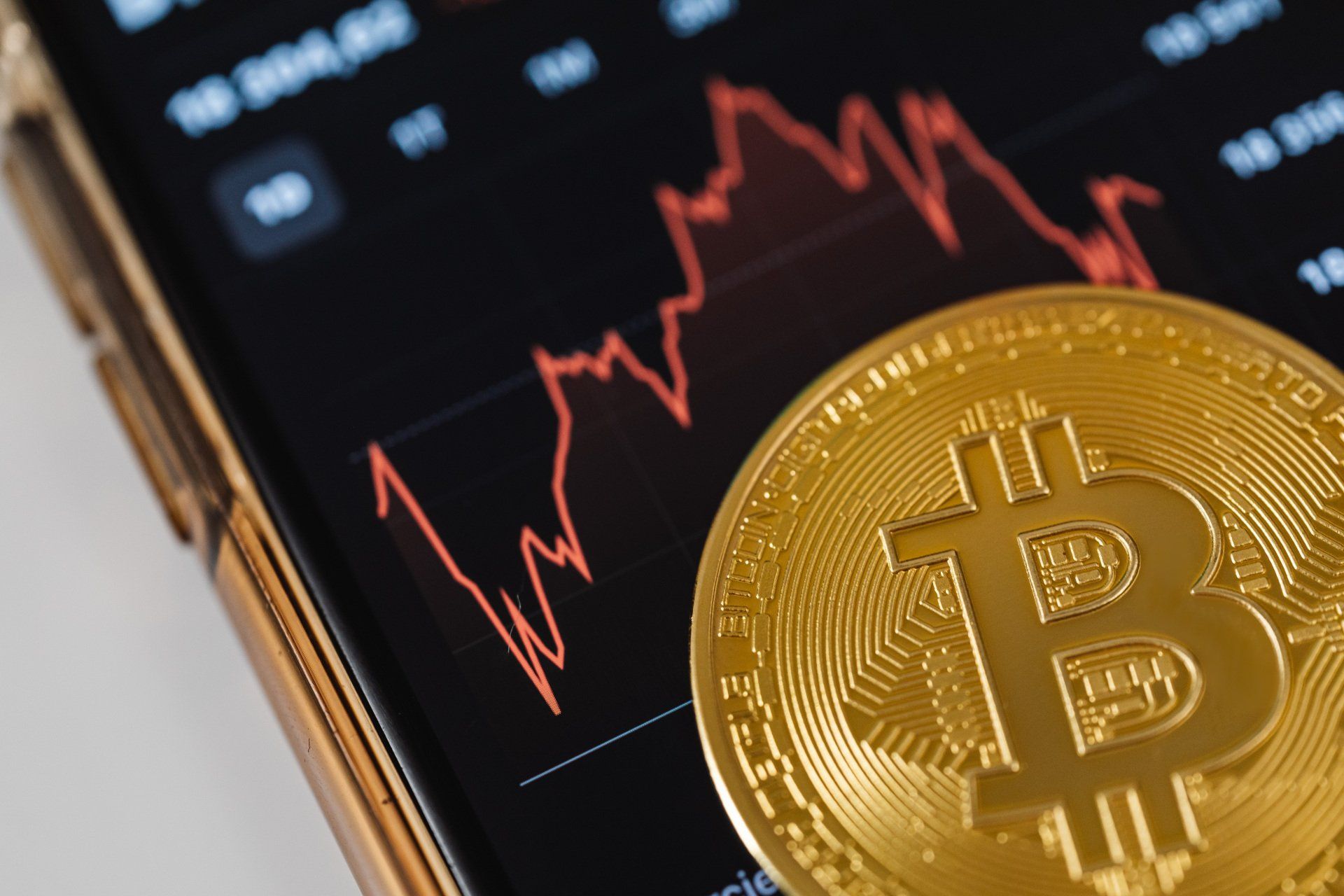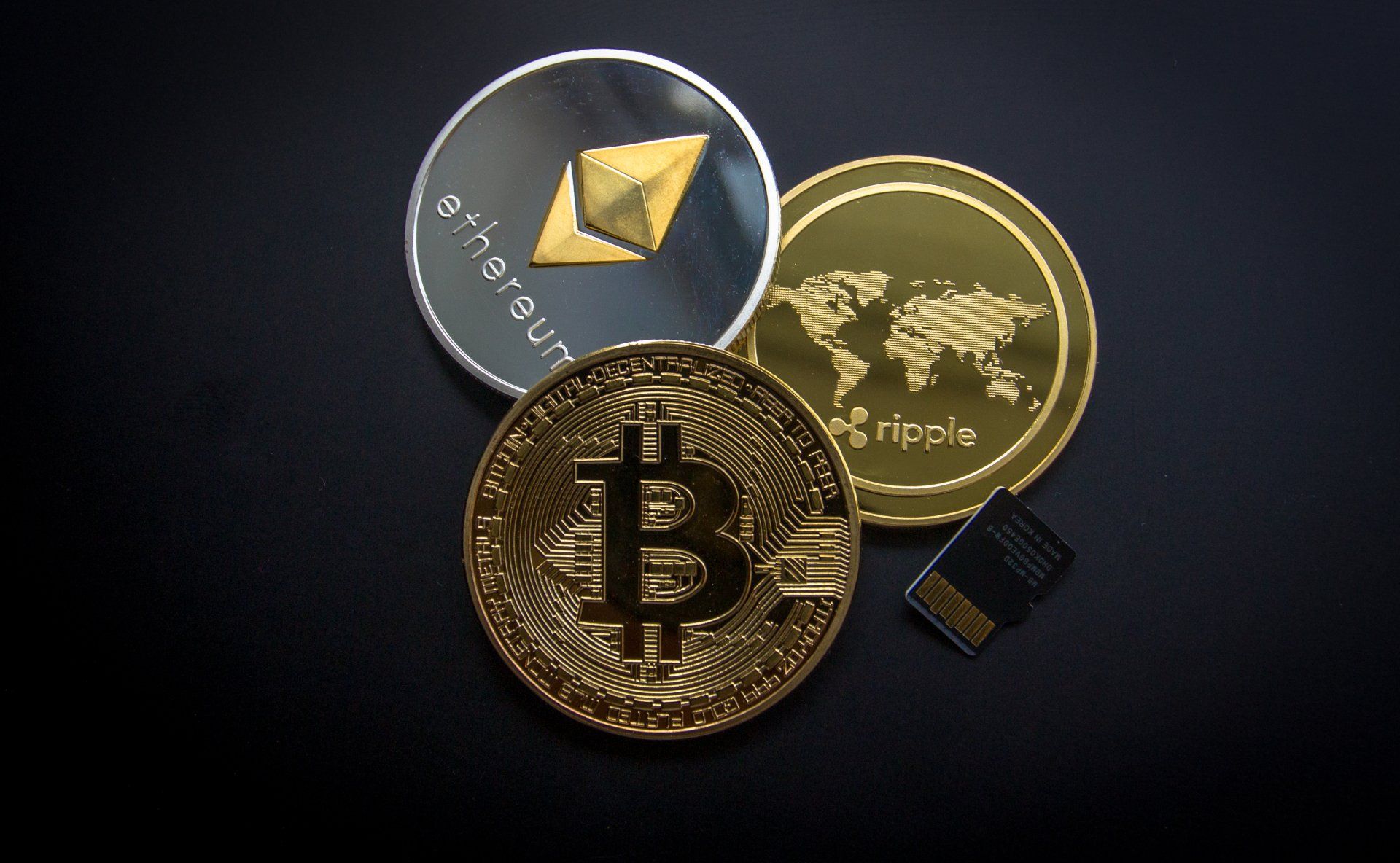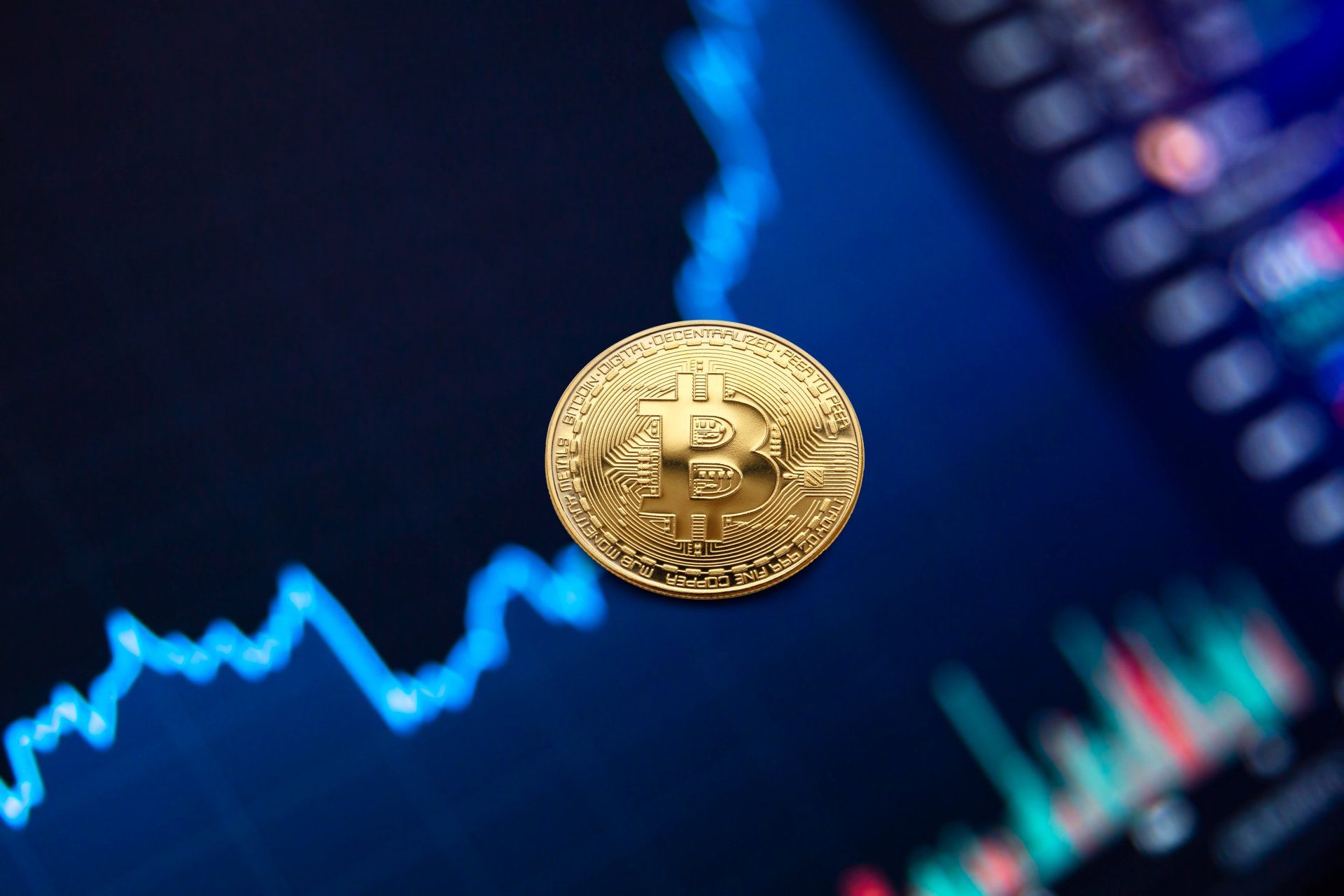NEWSLETTERS
NEWSLETTERS

By Ross Silver
•
06 Apr, 2024
When the Federal Reserve (Fed) began hiking interest rates at the beginning of 2022, it turned the housing market upside down. The housing market, more than any other segment of the economy, was negatively impacted as the rate environment changed. Higher mortgage rates initially slowed demand, then dampened housing supply, particularly for those in the market for existing homes. A combination of rising home prices and the highest mortgage rates in more than 20 years, creates a budgeting challenge for potential homebuyers. According to Rob Haworth, Senior Investment Strategy Director at US Wealth Management, “The combination of higher home prices and elevated mortgage rates creates a meaningful headwind for new homebuyers. They either need to be able to make a bigger down payment or they must earmark more of their monthly budget for housing costs.” In December 2023, the Fed's Summary of Economic Projections (SEP), projected three rate cuts in 2024 by the Central Bank. However at the end of March, the Fed's Federal Open Market Committee (FOMC) left the short-term federal funds rate steady at a 23-year high of 5.25% to 5.5% . Interest rate traders are hoping that the FOMC will enact its first quarter cut rate in June. Housing economists are waiting with bated breath for these anticipated rate cuts to begin. Home prices have dropped sharply and appreciation has slowed nationally since the Fed began raising rates in 2022. Since home prices are not solely driven by interest rates, it can be difficult to predict how rate cuts will affect the housing market. Still, the Fed’s policies set the overall tone for mortgage rates. The Fed bumped rates seven times in 2022, a year that saw mortgage rates jump from 3.4 percent in January all the way to 7.12 percent in October. Clare Losey, an economist at the Austin Board of Realtors in Texas, says that such increases diminish purchase affordability, making it more difficult for lower-income and first time buyers to purchase a home. The predicted cuts by the Fed should typically lead to lower mortgage rates. Selma Hepp, Chief Economist at Core Logic stated, “Lower mortgage rates would help spur home sales activity, which are expected to increase in 2024 compared to 2023.” Additionally, Hepp concluded that, “ Declines in mortgage rates will drive more sellers to trade their existing home and help add much-needed inventory to the market, leading to more transactions.” More inventory may lead to more competitive housing prices and reasonable affordability for home buyers. Tickers to consider: IKT , KALA , CEI Sylva Disclaimer: https://www.sylvacap.com/disclaimer

By Ross Silver
•
27 Mar, 2024
On March 5,2024, the cryptocurrency Bitcoin crossed $68,900, the highest price in its 15-year history. This soar comes less than 2 years after Bitcoin dropped below $17,000 in November 2022. Most analysts are very familiar with the volatile cycles of Bitcoin. Immediately after reaching its record high, Bitcoin fell to $61,000 by close of the same day. Today, March 15, 2024, Bitcoin closed at $69,621.28. Bitcoin was originally designed as an alternative to the traditional finance system, in which people might be able to send money around the world without extractive intermediaries. The concept behind Bitcoin allows online payments to be transferred from one party to another without going through a financial institution. Thereby alleviating the typical processing, service and wire transfer fees that are accrued by most financial institutions. Another appealing aspect of Bitcoin is that it has been viewed as an inflation hedge. This means that Bitcoin cannot be devalued by a central bank printing more of it. Bitcoin was designed to only have 21 million units in circulation. In January, the US Financial Regulator approved exchange traded funds (ETF), which has benefited the surging price of Bitcoin since the start of the year. According to Jeff Billingham, director of strategic initiatives at Chainalysis, this approval shows there is now “institutional maturity” in the cryptocurrency market . Additionally, James Knightley, the chief international economist at the banking group ING, says elevated inflation readings have encouraged bitcoin buyers who see the cryptocurrency as an insurance policy against rising prices. According to Knightley, “Risk appetite has also soared in recent weeks with tech stocks fuelling the sense of Fomo [fear of missing out] in markets and I think bitcoin is being swept along in all of this.” Haseeb Qureshi, a managing partner at the crypto venture capital firm Dragonfly, believes that Bitcoin will only continue to increase in value over the next year. Bitcoin has yet to hit the “halving,” a mechanism built into Bitcoin that aims to make the currency more scarce and therefore, more valuable. Bitcoin halvings happen roughly every four years, with the next one set for April. Bitcoin prices rose after each of the three previous halvings, giving reason to believe that the trend will continue. Bitcoin is known for its ability to overcome any challenges and have strong comebacks. Various financial experts have been predicting that the Bitcoin bubble will pop “in the near future” for the past eight or so years; yet, somehow the coin still remains on top. BTC investors are enjoying their high profits and hoping the rising trend of Bitcoin will continue. Tickers to consider: IKT , KALA , CEI Sylva Disclaimer: https://www.sylvacap.com/disclaimer

By Ross Silver
•
17 Feb, 2024
Many analysts and investors adhere to the belief that gold prices and interest rates have an inverse relationship. The idea is that, since higher interest rates make fixed-income investments more attractive, money will flow out of gold and into high-yielding investments as rates rise. Therefore when the Federal Reserve raises the federal funds rate, then weakness in gold should follow. However, historical data shows no significant correlation between rising interest rates and falling gold prices. Ultimately, the relationship between gold prices and interest rates is uncertain and unstable because gold is traded on a global market subject to forces far beyond the reach of the Federal Reserve . From March 2022 to July 2023, the Federal Reserve raised the federal funds rate by more than five percentage points. In that same time period, gold prices rose from $1908.30 to $1960.40. By the end of 2023, gold was trading at $2062.40. While interest rates may have some effect on gold prices, rising rates don’t automatically drag gold prices down . The real picture involves many moving parts, including factors such as fears of inflation, geopolitics, global growth prospects, and wider investor outlooks. It is also important to remember that gold is influenced by supply and demand. Higher interest rates may reduce overall investment demand for gold. At the same time, if supplies do fall, then it is possible that the price of gold sustains, or even appreciates. The constant jostling of supply factors can influence the relationship between the gold price and interest rates. Economic and geopolitical uncertainty tend to be positive drivers for gold. Many investors view gold as a safe-haven asset during troubling times due to its ability to remain a reliable store of value. Because of its low correlation with other asset classes, gold can act as insurance during falling markets and times of geopolitical stress. J.P. Morgan research predicts that both gold and silver will have a positive forecast over the course of 2024 and into the first half of 2025. According to the J.P.Morgan, gold prices will peak at $2300/ oz in 2025. T his prediction assumes a Fed cutting cycle initially delivering 125 basis points (bp) of cuts over the second half of 2024, pushing gold prices to new nominal highs. Tickers to consider: IKT , KALA , CEI Sylva Disclaimer: https://www.sylvacap.com/disclaimer

By Ross Silver
•
18 Jan, 2024
2023 was not a good year for potential home buyers. Mortgage rates surged and hit a high of 7.79% in October. On December 13, 2023, policy makers kept the federal funds rate unchanged for a third straight meeting. The federal funds rate is the benchmark interest rate that financial institutions charge for overnight loans. The federal funds rate tends to indirectly influence mortgage rates. Although economists are optimistic that the Federal Reserve is done with its rate-hiking campaign to lower inflation due to the unchanged rate, affordability challenges will probably continue in 2024. Pent-up demand and low inventory will generally bolster prices, and elevated mortgage rates will remain until the Fed implements cuts to the federal funds rate. The US housing market has experienced a significant upswing in home prices over the past few years. However, forecasting the housing market for 2024, there are signs that this trend may be changing. The data from the housing market indicates a potential housing market correction, with home prices stabilizing and, in some regions, even dropping. According to the Central Finance Group, the real estate forecast for next 5 years presents mixed messages. Some experts predict a stable housing market, whereas others foresee a downturn, leading to a real estate crash. In order to better understand the mixed messages, factors that primarily affect the housing market need to be evaluated. First and foremost is the trend in interest rates. Higher rates typically lead to increased mortgage payments. This reduces the affordability of homes for many potential buyers. This scenario can potentially lead to a housing market correction if the rate rising trend continues. Inflation also plays a crucial role in the housing market. High inflation rates cripple the purchasing power of the consumer. This in turn makes it more challenging for individuals to afford new homes. If wages do not keep up with the cost of living, we could end up with a scenario where home price dropping becomes a common phenomenon. Despite these challenges, there does remain a healthy demand for home purchases amongst millennials. This demand could potentially protect the housing market from a severe crash. Additionally, a limited housing supply has been a persistent issue, and it continues to influence housing market predictions 2024. A limited housing supply combined with a high demand from millennials may play a leading role in keeping the housing market from crashing again. Finally, it is important to remember that in order for the demand from the millennials to positively influence the housing market; interest rates must be cut by the Fed. This is the only way these millennials will be able to afford to purchase a home. If interest rates remain high or continue to rise, it will not matter how much of a demand there is. At the end of the day, the demand will not be met simply because it is unaffordable. Tickers to consider: IKT Sylva Disclaimer: https://www.sylvacap.com/disclaimer

By Ross Silver
•
20 Dec, 2023
Bitcoin was created in 2009, by a pseudonymous creator, Satoshi Nakamoto and is the world’s first cryptocurrency. Cryptocurrencies are digital tokens that use technology to facilitate instant payments without the need of a third party. From the beginning, the Bitcoin supply was capped by Nakamoto. The maximum number of coins stipulated to be in existence was 21 million. As of Nov. 12, 2023, there were 19.53 million Bitcoins in existence with 1.46 million left to be mined. However, experts believe that it will take until the year 2140 before the supply cap of 21 million is reached. In 2009, Bitcoin started trading at a price of $0.00099 per coin. On December 12, 2023, Bitcoin was trading at a price in excess of $41,000 per coin. 2023 has been a surprisingly good year for Bitcoin. Since January 1, 2023, Bitcoin has increased by 164%. It has outpaced traditional assets, including gold which has risen 10% and the S&P 500 which has gained 20%. Additionally, according to CoinGecko data, Bitcoin has increased its share of the total crypto currency market by more than 50%. What is fueling this rally by Bitcoin? One of the most important factors is signs that major investment firms are set to get regulatory approval to offer spot bitcoin exchange traded funds (ETF)— a pooled investment security that can be bought and sold like stocks. Federal regulators are expected to give the “go ahead” for several bitcoin ETFs as early as January 2024. Yiannis Giokas is a senior product director at Moody’s Corporation, an American business and financial services company. According to Giokas, the green light from federal regulators for Bitcoin ETF’s could make investing in crypto more accessible to investors. In an interview with MoneyWatch, Giokas states, "As more and more managers venture into the bitcoin spot ETF space, more retail and institutional investors, even the more conservative ones, will feel a higher degree of comfort investing in this space." Asset management giants like BlackRock and Fidelity are among the 13 companies that have submitted applications to the U.S. Securities and Exchange Commission for the multi-billion dollar product. Another important factor is the growing assumption that the Federal Reserve is done hiking its benchmark interest rate and that inflation is receding. When interest rates fall, investors are more likely to pour money into riskier investments such as crypto. Greg Magadini, Director of Derivatives at the crypto data firm, Amberdata, told CBS MoneyWatch, “Lower rates are bullish for Bitcoin.” So what is in store for Bitcoin in 2024? In April 2024, Bitcoin will undergo what is known as halving. This is an event where the rewards for mining Bitcoin transactions are cut in half. This event occurs about every 4 years and cuts the rate at which new Bitcoin supplies enter the market. Past havings have led to huge rallies for Bitcoin, and another massive rally is predicted for 2024. It is important to remember that past performance is no guarantee of future performance. According to the Motley Fool, Bitcoin investors are setting their sights on the $1 Trillion mark. However, they also recommend that investors should not buy Bitcoin unless they plan on holding it for the next 5 to 10 years. Bitcoin is a “long term investment and should be treated as such.” Tickers to consider: IKT Sylva Disclaimer: https://www.sylvacap.com/disclaimer

By Ross Silver
•
09 Nov, 2023
Conflicts and stand-offs like the most recent Israel- Palestinian war have global implications, not only for peace and security, but also for the economy and global stock markets. Despite a certain level of uncertainty that war can bring, stock markets have shown resilience over time. In his article on counterintuitive market outcomes, Ben Carlson, Director of Institutional Asset Management at Ritholtz Wealth Management, wrote "From the start of World War II in 1939 until it ended in late 1945, the Dow was up a total of 50%, more than 7% per year…” In the days and weeks following the Russia/ Ukraine conflict, the S&P 500 fell more than 7%, but within a month, the market had rebounded and the S&P 500 was trading at a higher level than before the invasion. So what can we expect from the Israel - Hamas conflict? Although Israel is only about the size of New Jersey, it has a huge influence on the US Stock Market. According to Bloomberg, funds in the US hold more than $43 billion in Israeli stocks and bonds. More than 100 Israeli companies are listed on US exchanges, with a combined market cap of more than $150 billion – Israel has the fourth most companies listed on the Nasdaq after the United States, Canada and China. Analysts are predicting that if the conflict remains between Israel and Palestine, then the markets will likely forget about it after a few days or weeks. Historical evidence suggests that conflicts can have an impact on stock market performance. Past conflicts have shown that stock markets can experience initial declines in response to escalating tensions and uncertainties. However, once the Israel-Hamas conflict reaches a resolution, the stock market has the potential to experience a recovery and stabilization period. Historically, military surprises typically decline the S&P 500 for about 30 days after the initial conflict, and then recover about 60 days after the event. Tickers to consider: IKT Sylva Disclaimer: https://www.sylvacap.com/disclaimer

By Ross Silver
•
29 Sep, 2023
The Federal Reserve (The Fed) is the central banking system of the United States. It comprises 12 regional banks and is responsible for governing and conducting monetary policy , supervising and regulating financial institutions, and maintaining the overall stability of the banking and financial system of this country. Monetary policy is the approach taken by a central bank or government authority with the intent to influence economic growth by expanding or constraining the supply of money in that region. The question to be answered is how does The Fed’s monetary policy affect the Stock Market (The Market)? On September 20, 2023, The Fed officials held the benchmark overnight interest rate in the current 5.25%-5.50% range, but sketched a stricter policy path moving forward in an inflation fight they now see lasting into 2026. Fed Chair Jerome Powell said, a solid economy combined with strong job growth, will allow the central bank to keep additional pressure on financial conditions through 2025. In August, inflation fell to 3.7% , down from 7.0% when it peaked in June 2022. However, that still remains well above the Federal Open Market Committee's (FOMC) objective of 2 percent. Bringing inflation back to 2 percent will likely require a period of below-trend growth and some softening of labor market conditions. In response to high inflation, the FOMC continued to increase interest rates 11 times and reduce its securities holdings of the Treasury and mortgage-backed securities over the course of this past year. The Federal Reserve is acutely aware that high inflation imposes significant hardship, especially on those least able to meet the higher costs of essentials. The FOMC is strongly committed to returning inflation to its 2 percent objective. Long story -short, The Fed will continue to raise interest rates until they reach their goal for 2% inflation. What does this mean for the outlook of the Stock Market? The Market has endured significant volatility as investors factored in rising rates. Juan Pablo Villamarin, senior investment advisor at Intercontinental Wealth Advisors, notes that the Fed’s primary policy tool is the Fed Fund Rate (FFR). The FFR is the rate that banks borrow and lend to each other overnight. Changes in the FFR affect the overall economy by making money easier or more difficult to borrow. A higher FFR results in a higher cost of borrowing for businesses. This in turn means that businesses no longer have access to cheap capital for reinvestment in growth. Consumers no longer have access to low interest rates for car purchases and mortgages, causing them to spend less. Villamarin notes that the primary result of Fed interest rate hikes on stocks is an increase in the cost of capital. “All else being equal, a higher cost of capital causes future potential profits to be worth less, and decreases investment and spending on margin by companies," he says. Robert Johnson, chairman and CEO at Economic Index Associates, agrees, finding that during "restrictive," or rising-interest-rate, environments, stock returns tend to be more muted. Johnson notes that the average annual real return for stocks over a 55-year period was 13.8% in expansive periods, but only 1.7% in restrictive periods. However, businesses that are more cyclical in their demand tend to be disproportionately affected by a restrictive environment. This often includes stocks from technology, materials and consumer cyclical sectors and small-cap stocks. Tickers to consider: IKT Sylva Disclaimer: https://www.sylvacap.com/disclaimer

By Ross Silver
•
09 Aug, 2023
The US economy perked up a bit in the second quarter despite interest rate hikes and still high inflation. This growth can be attributed in part to consumer spending. Consumer spending, which accounts for about two-thirds of economic output, grew at just a 1.6% rate in the second quarter, down sharply from a 4.2% rate in the first three months of the year . The rate decline from the first quarter was due largely to a sharp pullback in spending on durable goods, such as cars and appliances. According to Shannon Seery, an economist at Wells Fargo’s Corporate and Investment Bank, consumers have “shifted their spending patterns in terms of their actual consumption." This was reflected in consumers cutting back on durable goods purchases in the second quarter. Consumer spending and the health of the labor market typically have a parallel relationship. If one goes up, the other goes up and vice versa. If employers continue to provide jobs, and wages continue to grow as inflation slows, then consumers will still have healthy purchasing power. Whether the Fed can successfully defeat inflation without seeing a decline in the labor market remains to be seen, but so far, both spending and hiring have lessened slightly and gradually. What does this mean for the stock market? Optimism that the economy will land softly has rallied the stock market recently and sent prices soaring. In July, the DOW posted 13 straight days of gains, The S&P 500 reported a 3.1% gain and closed out July just 200 points below its all time high. Finally, the NasDaq Index jumped 4% and its 37% gains from January -July 2023, marked its best since 1975. The stock market is entering the second half of 2023 with positive momentum, which historically bodes well for returns for the rest of the year. Technology stocks and growth stocks have outperformed in 2023, and investors are increasingly optimistic the Fed can navigate a soft landing for the U.S. economy. While the risk of a recession remains elevated due to inflation and high interest rates, most analysts are generally optimistic about the outlook for stocks in the second half of the year. Tickers to consider: MARK , ASST , RNAZ , & IKT Sylva Disclaimer: https://www.sylvacap.com/disclaimer

By Ross Silver
•
20 Jul, 2023
On March 15, the Federal Reserve announced that the FedNow Service would launch in July 2023. According to the Federal Reserve, FedNow will “facilitate nationwide reach of instant payment services by financial institutions—regardless of size or geographic location—around the clock, every day of the year.” With FedNow, financial institutions will be able to clear and settle retail payments instantly at any time, including nights and weekends. Payments between banks typically require clearing and settlement. Clearing means that banks exchange information about a payment, including checking for fraud. Settlement involves moving money to the recipient’s account. FedNow is an interbank, like Automated Clearing House (ACH) Network. However unlike ACH, which processes its transfer in batches and tends to take one to three business days to complete, FedNow transfers will take seconds. The instantaneous transfer of funds can be likened to immediate gratification. We want something and we want it NOW. Having our payments made and received instantaneously sounds like a good thing. But is immediate gratification really in the best interest of individuals? The instantaneous transfer of funds can only occur by digitizing the funds being transferred. The digital dollar being advocated by the Federal Reserve is an example of a central bank digital currency (CBDC). At first glance the US currency already appears to be digitized. Many people rarely carry physical cash and prefer to use digital payment methods like a chipped credit card or their smartphones. Direct deposit has become the standard method of payment for employers. Dollars are transferred electronically, and no longer in the form of paper money and coins. However, those paper dollars and coins are interchangeable, exchangeable and can be substituted for something of equal value. For example, I can go to a yard sale with my paper cash, or checkbook, and make a purchase, exchanging my “paper money” for a specific item. CBDCs are entirely under bureaucratic control because every digital dollar has a unique fingerprint. Because CBDCs are programable, traceable, trackable and taxable, all transactions can be surveilled, recorded, or even reversed by the push of a button. CBDCs can be earmarked for certain purchases and forbidden from others. With a CBDC, the central bank can potentially force spending and prevent saving by imposing or capping maximum savings levels. Additionally, in order to prevent people from going over their maximum savings “cap,” the central bank could confiscate unspent digital dollars. People with no savings are more reliant on the government in emergency situations. In this scenario, if you’re unable to save for a rainy day, you would be at the mercy of the government who holds your financial purse strings. Many proponents of central bank digital currency (CBDC) are also supporters of a “cash-free” society. Some may argue that in a cashless society there would be less crime and theft, etc as there would be no cash to steal. However, a cashless society would lead to more bondage and less freedom for individuals. Digitizing central bank funds just gives the Fed more control (monopoly) over your money. People would not be able to escape a government-imposed fee on their idle money balances. People would have no alternative to electronic accounts, and have no way to stop the government from taking their money when, for example, the Fed declared a macroeconomic emergency. Another huge concern would be the Fed’s ability to inflate and devalue the currency. Implementing CBDCs essentially removes private banks from the Fed’s methods of creating money. This would in effect guarantee future inflation and unlimited government spending. Private banks would no longer be necessary because all borrowing by consumers could happen directly through the central bank. The End Result?- The central banks have complete control over who does and does not get to borrow money. With no accountability, people could be turned down for loans for reasons other than the ability to repay the loan. Are you not ‘WOKE” enough? Do you donate money to churches? Do you financially support or volunteer for certain organizations? These could all be potential reasons that you “denied” a mortgage or a loan. CBDCs make such hypothetical scenarios possible, and perhaps probable. In summary, FedNow is a new interbank Real Time Gross Settlement (RTGS) payment system that will support instant clearing and settling of retail transactions that is supposed to go into effect in less than a week. The instantaneous transfer of funds will occur through the use of central bank digital currency or CBDCs. Individuals will not have access to FedNow directly, but instead will have access to the instant payment services offered by their financial institutions. As with other Fed payment services, FedNow will charge fees to its participating institutions. This inevitably means those fees will get passed onto the customers of said institutions, and instantaneously withdrawn from the patron’s accounts. The implementation of FedNow appears to actually remove an individual’s control over their money and place control into the hands of the government. There is a saying, “whoever controls the money has the power.” Our founding fathers built this country as a Republic, a government by the people, for the people. We have drifted very far from being governed “by the people and for the people.” It is highly unlikely that our country would benefit from our government having more power. Tickers to consider: MARK , ASST , RNAZ , & IKT Sylva Disclaimer: https://www.sylvacap.com/disclaimer

By Ross Silver
•
03 Jun, 2023
The human race has always had a fascination with youth and longevity. Numerous studies have been conducted time and again to find substances that can fight aging and offer humankind the gift of better health and wellness. With the advancement of technology, the time where we could take a pill to extend our lifespan might be just around the corner. A class of drug that supports healthy aging, known as a senolytic drug, could do more than add years to your life. Cells constantly divide, a process that allows us to grow and heal, but as we age, some cells stop dividing and become “ senescent . ” Cellular senescence regulates physiological and homeostatic processes particularly during embryonic development and wound healing. Cellular senescence can also be a pathological process that contributes to aging, various diseases and metabolic disorders. Senescent cells can also contribute to a number of health conditions such as cancer, dementia, and arthritis. The older we are, the more of these senescent cells we accumulate. Senolytic drugs are designed to clear away senescent cells while leaving adjacent cells unharmed. Senolytic drugs, stem cell therapies and other interventions, have been shown to extend lifespan and reduce tissue injury in various animals. Fisetin is a plant compound found in many fruits and vegetables. Scientists have considered Fisetin a senolytic compound because it targets and wipes out senescent cells in the body. In his research, Paul Robbins, co-director of the Institute of Biology of Aging and Metabolism at the University of Minnesota, found that Fisetin significantly extended and improved the lives of lab mice. Other studies have shown that Fisetin has improved Alzheimer's disease and slowed the growth of cancer cells in mice. It is still early days for the senolytic field. While some drugs such as Dasatinib, Quercetin, Fisetin, 17-DMAG, Navitoclax, Catechins may show promise in lab mice, more time and research is necessary before in order to determine the benefit of senolytic drugs or compounds to humans. It is important to note that natural Fisetin and other anti-inflammatory compounds are abundant in strawberries as well as onions, apples, and a whole bunch of other colorful fruits and vegetables. So we may not have to wait for the miracle “anti-aging pill” after all. Eating more fruits and vegetables as we age is just a win-win for everyone. Tickers to consider: MARK , ASST & IKT Sylva Disclaimer: https://www.sylvacap.com/disclaimer
Copyright © 2022 SylvaCap, All Rights Reserved. - Privacy Policy - Disclaimer
